One of my favorite things about raising chickens is just how versatile they are. That, and how cheap and easy they are to care for generally.
But anyway, when it comes to production chickens can give you meat and eggs, and some breeds are known for being great at both purposes.
A properly chosen flock of dual-purpose chickens can keep you and your family rolling in eggs and plenty of high-quality, nutritious meat year in and year out. Dual-use birds have a ton of benefits, and they make keeping a flock of any size entirely worth it.
If you want to maximize the returns from your chickens check out these dual-purpose breeds on the list below.
Australorp
- Weight: 10 lbs.
- Laying Age: 5 to 6 months.
- Eggs per Year: Up to 300.
- Broodiness: Moderate.
- Processing Age: 16-20 weeks.
- Foraging Ability: Good.
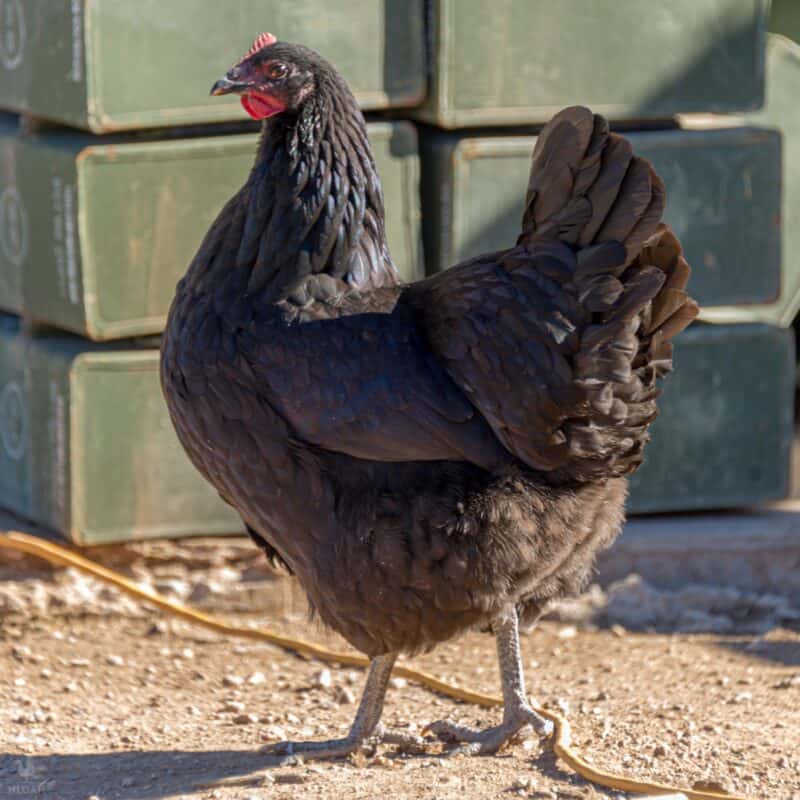
Australorps are perhaps best known for being incredible egg layers, with many highly productive lines producing hens capable of plunking down up to 300 eggs every single year.
But beyond this, they are big, stocky, and hardy birds which makes them a wonderful table bird and versatile, with roosters weighing up to 10 pounds.
Combining this with the fact that they are resilient in hot and cold environments and generally easy to handle owing to their calm temperament, it’s difficult to make a better case for a dual-purpose chicken than the Australorp.
Austra White
- Weight: 7 lbs.
- Laying Age: 5 to 6 months.
- Eggs per Year: 200-290.
- Broodiness: Moderate.
- Processing Age: 16 to 25 weeks.
- Foraging Ability: Good.
A unique crossbreed derived from the highly prolific Australorp above, and the famous White Leghorn, Austra Whites combine the best attributes of both into a truly wonderful dual-purpose bird.
Compared to their Leghorn sires, they lay nearly as many eggs but they are far more mellow. They also have the overall good health, stoutness, and environmental resistance of the Australorp.
You can expect the Austra White to produce an average of 245 large eggs yearly at a rate of about five a week.
These unique chickens are also famous for dutifully laying throughout the entire year, rarely missing a beat when the weather turns cold.
They also produce a fair quantity of supple, tender meat, but they are not as large as some other breeds on our list here: roosters top out at around 7 pounds and hens are significantly lighter at a maximum of 5 pounds.
It’s also worth mentioning that the Austra White doesn’t need as much space as some other breeds, making it a great choice for smaller homesteads or backyard flocks.
Orpington
- Weight: 10lbs.
- Laying Age: 5 to 7 months.
- Eggs per Year: 200 to 285.
- Broodiness: Very high.
- Processing Age: 18 to 24 weeks.
- Foraging Ability: Poor; low motivation.
Among the most famous and beloved domestic chickens, the Orpington was purpose-bred as a dual-use bird.
First developed in England way back in the late 19th century, they were basically an overnight success and have enjoyed great fame to this very day for their practical advantages and also for their amenable nature.
Orpingtons are decent but reliable egg layers, maxing out typically around 200 eggs per year though Buff Orpingtons are known to lay a lot more, just shy of 300 eggs per year. Hens are quite broody but typically great mothers.
They produce plenty of good meat, and considering both roosters and hens are quite stocky at 10 pounds and 8 pounds respectively, they make a fine table bird…
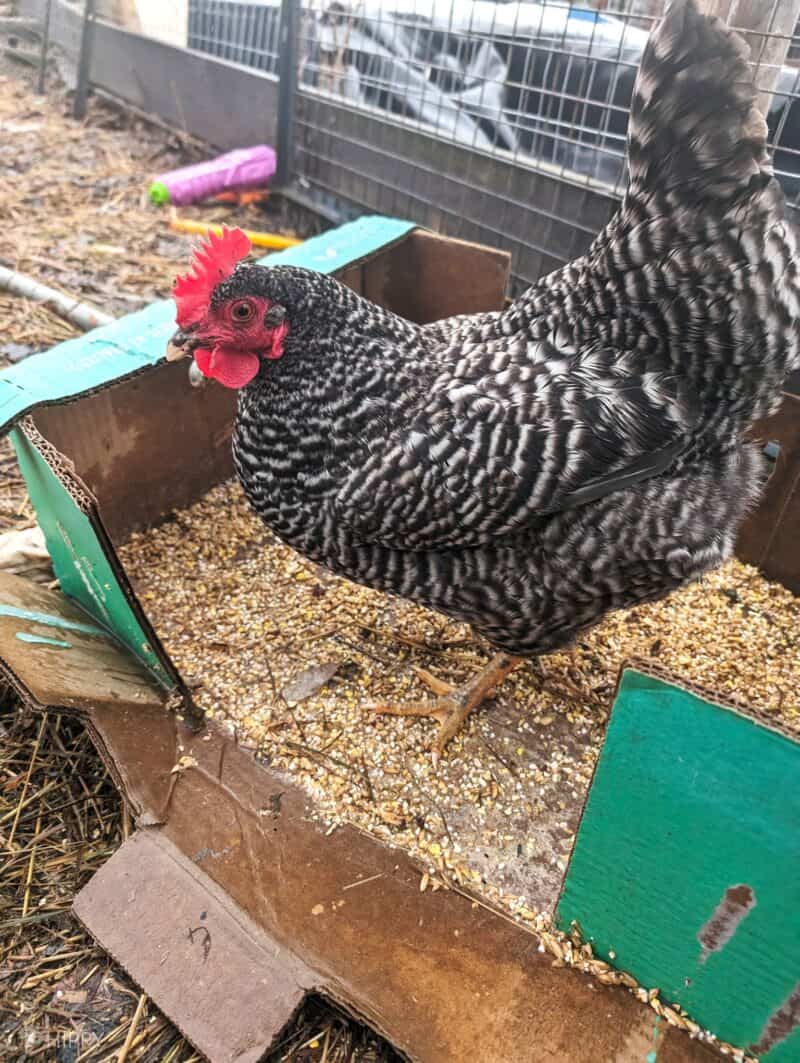
Plymouth Rock
- Weight: 9 ½ lbs.
- Laying Age: 5 to 6 months.
- Eggs per Year: Up to 210.
- Broodiness: Very Low.
- Processing Age: 16 to 20 weeks.
- Foraging Ability: Good.
Closely related to the Dominique, and differing pretty much only in the appearance of the comb, the Plymouth Rock is sometimes referred to as the Barred Rock based on its stereotypical pattern and colors.
Instantly recognizable, they used to be the predominant commercially raised chicken in the US, but that tapered off quickly in the latter half of the 20th century. But today, as then, they are raised for both meat and eggs and are excellent producers of both.
Healthy hens will lay around 210 large eggs each and every year like clockwork until they’re about 3 or 4 years old and then they start slowing down.
This is another large domestic breed, and roosters tip the scales at nearly 10 pounds while hens are still quite sizeable at 7 ½.
Plymouth Rocks are not known to be broody, and are fairly tolerant of a wide range of weather conditions.
Wyandotte
- Weight: 9 lbs.
- Laying Age: 5 to 6 months.
- Eggs per Year: 185 to 260.
- Broodiness: High.
- Processing Age: 12 to 16 weeks.
- Foraging Ability: Average.
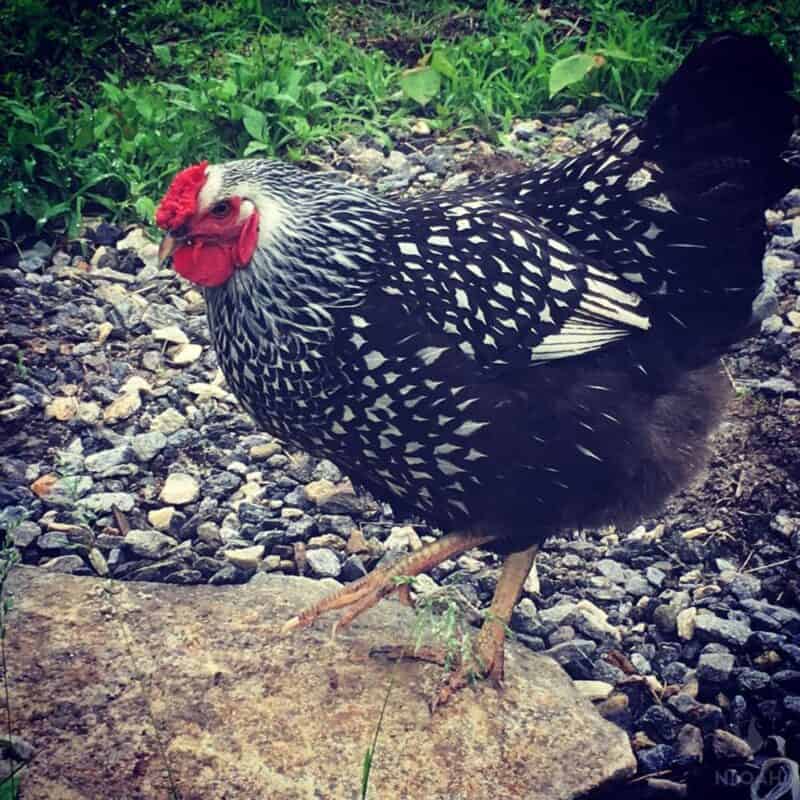
Once on the very brink of extinction, mostly owing to a lack of interest among the chicken-owning public, the Wyandotte has since been resuscitated and is now an extremely popular bird among homesteaders.
Most notable for their deep, broad breasts and sturdy build Wyandottes are available in many colors but all of them are prolific layers and sizeable enough to produce a fair quantity of meat.
Hens are sizable, weighing about 7 pounds on average while roosters are bigger, at about 9 pounds.
A healthy Wyandotte hen will produce anywhere from 185 to 260 eggs per year, and they are known to be pretty broody. This can make egg collection duty a little challenging, but in the plus column, they do lay reliably throughout the winter and are diligent mothers.
If there’s one major downside to Wyandottes, it’s that they can be particularly noisy compared to other domestic breeds: peace and quiet is not guaranteed! Think twice if you want a suburban backyard flock…
Dominique
- Weight: 7 lbs.
- Laying Age: 5 to 6 months.
- Eggs per Year: 220 to 275.
- Broodiness: Average; depends on the hen.
- Processing Age: 16 to 23 weeks.
- Foraging Ability: Good.
America’s oldest and in many ways most famous true heritage breed, the Dominique is said to be completely unchanged since it was first brought to the New World.
Dominiques are famous for being highly self-sufficient, hardy, and very good foragers. This makes them great for flock owners who don’t want birds that require tons of oversight day in and day out.
Although they are not the biggest breed around, maxing out at around 7 pounds, you’ll still get a great yield of meat from them.
When it comes to eggs, Dominiques have you amply covered: prolific hens crank out anywhere from 220 to 275 eggs per year.
Dominiques are also some of the very best chickens if you want to expand your flock naturally. Though they don’t always go broody, they are extremely fertile and tend to be diligent mothers and good sitters.
Faverolles
- Weight: 8 lbs.
- Laying Age: 6 to 7 months.
- Eggs per Year: Up to 180.
- Broodiness: Moderate.
- Processing Age: 16 to 20 weeks.
- Foraging Ability: Good.
A highly distinguished, regal, and stoic breed, the Faverolle hails from France, and was created from many other heritage chicken breeds in the 19th century.
Again developed specifically as a dual-use bird, they are capable of turning out a maximum of 180 medium eggs per year and quite a bit of meat thanks to their substantial weight of 8 pounds.
These are gorgeous and unique chickens, possessing intriguing colors, beautiful feathered legs, and beards.
Notably, Faverolles were bred to tolerate close confinement so they are wonderful for owners who don’t have a lot of space to spare. They’re also known to be famously friendly with people when they are raised with plenty of interaction.
Although they are relatively rare in the United States, there are dedicated groups that are spreading the word about these fancy French chickens.
Langshan
- Weight: 9 ½ lbs.
- Laying Age: 5 to 6 months.
- Eggs per Year: 200 to 225.
- Broodiness: Seasonal; broody in spring and summer.
- Processing Age: 14 to 18 weeks.
- Foraging Ability: Superb.
There are heritage breeds, and there’s arguably the heritage breed: the Langshan. This Chinese chicken is confirmed to have been bred for many centuries there and elsewhere in Asia.
Although they are rarely seen in the United States, they have a great reputation as being a large dual-use breed with a very large breast, and the meat is notable for being extremely light in color with a fine, clean taste.
As expected, these birds are also dependably good if not amazing layers, with hens producing anywhere from 200 to 225 eggs yearly, with an average of about 3 a week.
Another interesting fact is that Langshans are seasonal brooders, with moms becoming intent on hatching eggs they lay in the springtime, but not at other times throughout the year.
This can make the logistics of egg collection quite simple, but you can’t depend on them to expand your flock: they aren’t great sitters.
Rhode Island Red
- Weight: 8 ½ lbs Laying Age: 5 to 6 months.
- Eggs per Year: 200 to 300.
- Broodiness: Low.
- Processing Age: 12 to 16 weeks.
- Foraging Ability: Good.
A famous and greatly beloved heritage chicken, the brick-colored Rhode Island Red produces bountiful meat, with roosters growing up to 8 1/2 pounds and hens up to 6 ½ pounds. Meat that is fine-grained, only a little fatty and quite tasty.
Despite this, though, even in a commercial capacity, they are most known for their egg laying with hens cranking out anywhere from 200 to 300 eggs yearly.
Note, though they will rarely maintain that higher figure for more than a year or two. They’re also known for reliably laying straight through the winter which is great if you want to stay in fresh eggs all year long.
New Hampshire
- Weight: 8 lbs.
- Laying Age: 5 to 6 months.
- Eggs per Year: 180 to 200.
- Broodiness: Very High.
- Processing Age: 8 to 10 weeks.
- Foraging Ability: Superb.
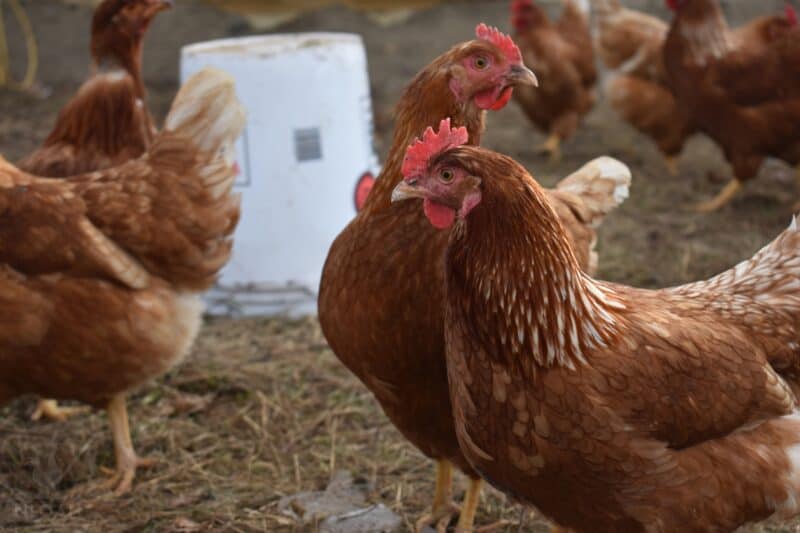
New Hampshires are commonly mistaken for Rhode Island Reds because of the usual brick red color, but they are nonetheless a distinct breed.
These chickens have roughly the same overall stature, but a New Hampshire is wider with a pronounced triangular or “delta” shape, and have a slightly lighter hue overall.
They’re also known to be a particularly long-lived heritage breed, with many clearing 8 years of age and some living longer than 10!
This is yet another breed that was created right from the start as a dual-use chicken, a task at which they still excel today.
New Hampshire’s lay anywhere from 180 to 200 large eggs yearly, and are impressive producers of meat. Roosters weigh about 8 pounds, but even much smaller hens provide a bounty of meat because they have such wide breasts. No jokes
Perhaps the only downside to them is that they’re notoriously broody, but on the flip side, they also happen to be great mothers and very attentive to their chicks, meaning they are a reliable way to expand your flock without an incubator.
Jersey Giant
- Weight: 15 lbs.
- Laying Age: 6 to 8 months.
- Eggs per Year: 180 to 200.
- Broodiness: Very low.
- Processing Age: 16 to 21 weeks.
- Foraging Ability: Good.
Jersey Giants tell you pretty much everything you need to know about them in the name. They are truly huge, with roosters tipping the scales at an astonishing 15 pounds, and hens regularly weighing more than 10 pounds.
A fully grown Jersey Giant stands more than 2 feet tall from toes to comb! Naturally, these immense birds yield a ton of meat, but there is a downside in that they take a very long time to fully mature physically; around a year and a half at the earliest.
For productivity-minded owners, this means that their conversion ratio is quite poor because you’ll be feeding them the entire time- and they eat a lot!
Nonetheless, they can feed you right back with anywhere from 180 to 200 jumbo eggs each and every year. Despite their immense size, the Jersey Giant is known for being very calm and docile with other chickens and people alike, and they serve well as peacemakers in mixed flocks.
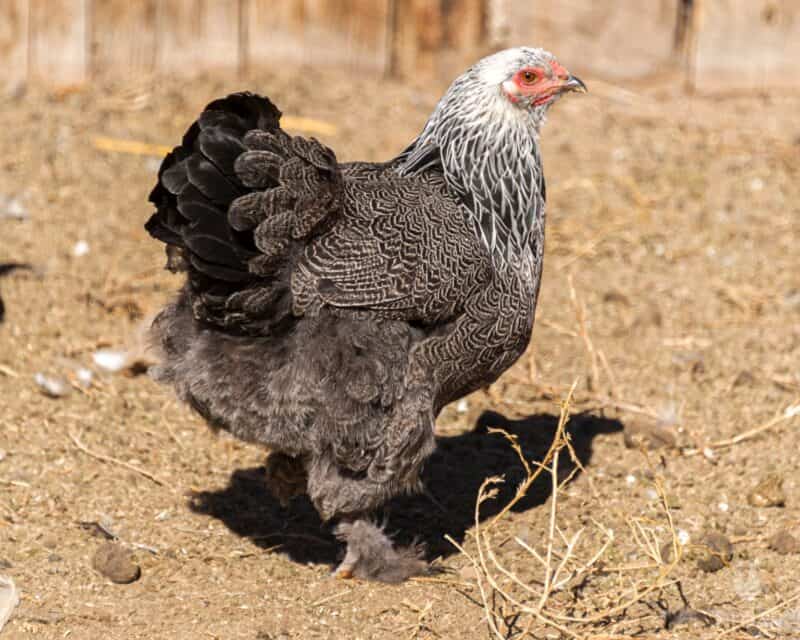
Brahma
- Weight: 13 lbs.
- Laying Age: 6 to 8 months.
- Eggs per Year: 115 to 150.
- Broodiness: Seasonally; broody in spring and early summer.
- Processing Age: 20 to 32 weeks.
- Foraging Ability: Good.
Another truly huge chicken, the origins of the Brahma are shrouded in mystery. Or perhaps it is better to say their origins have been lost to time, though most poultry historians agree they probably came from somewhere in Southeast Asia.
Although just surpassed by the Jersey Giant in bulk, Brahmas still tip the scales at an astonishing 13 pounds in the case of roosters, though hens tend to be a bit lighter- but not by much!
They yield tons of meat as you might expect, and the meat has a reputation for being delicious, rich, and of excellent quality overall. Sadly, these big cluckers take a long time to mature.
Brahmas also produce a decent supply of jumbo eggs, anywhere from 115 to 150 a year, though they are typically seasonal layers. They’ll start in late fall and keep laying right through mid-spring.
Hens tend to get broody in late spring or early summer, but they are poor sitters owing to their huge size.
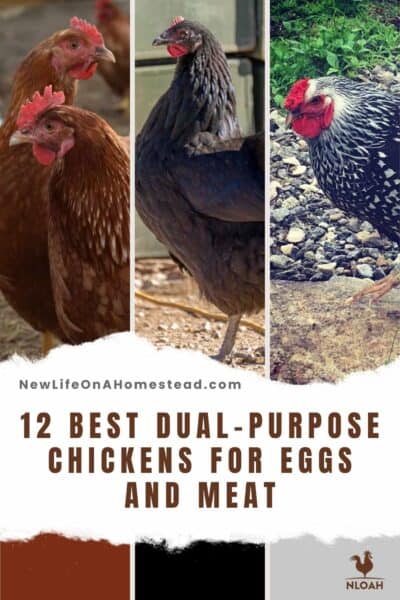
Tom has lived and worked on farms and homesteads from the Carolinas to Kentucky and beyond. He is passionate about helping people prepare for tough times by embracing lifestyles of self-sufficiency.
